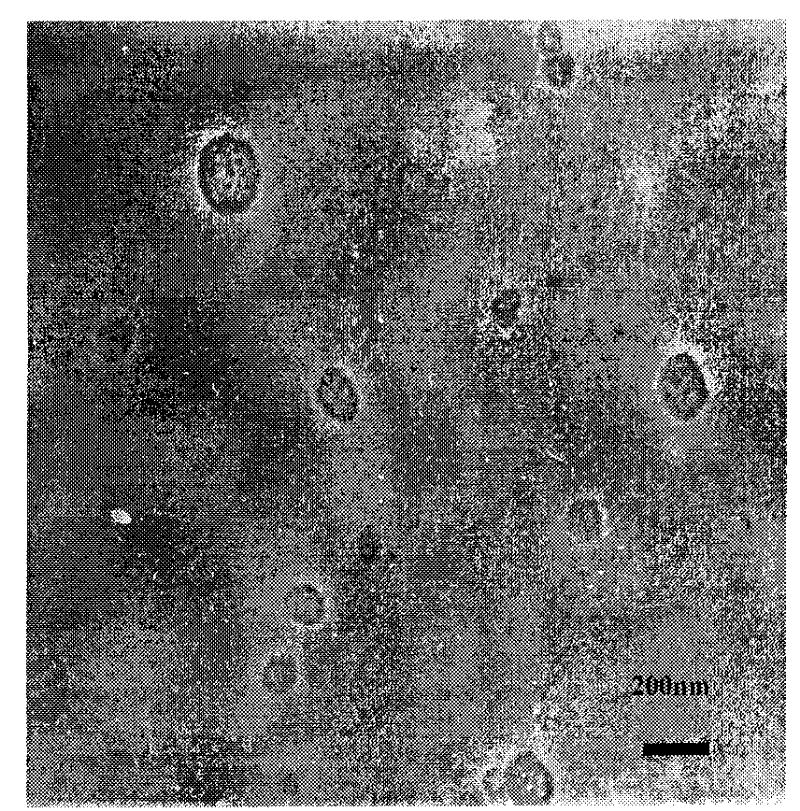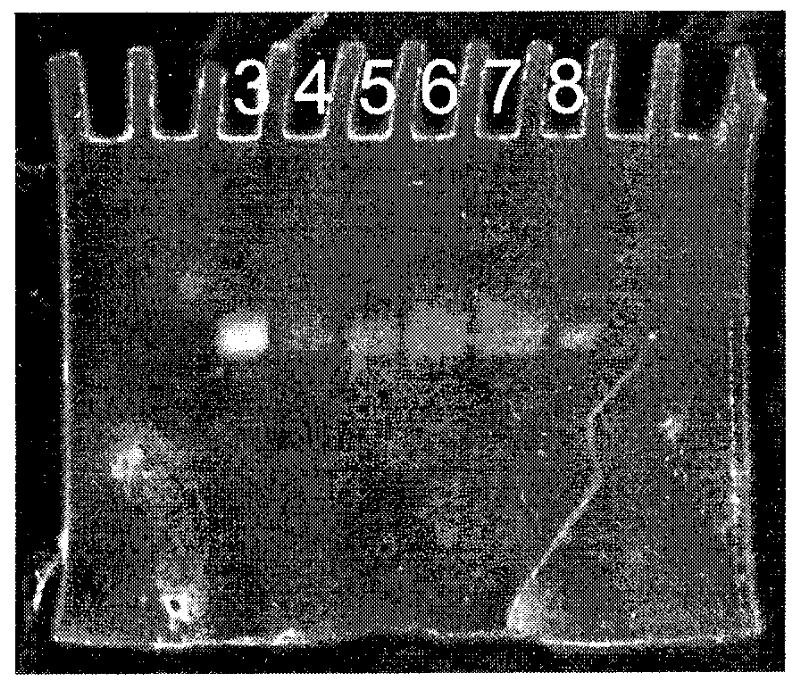A kind of targeted adhesion chitosan material and its application
A chitosan, targeting technology, applied in non-active ingredients of medical preparations, gene therapy, anti-tumor drugs, etc., can solve problems such as affecting gene capacity, reduce chemical toxicity, good solubility, and reduce space The effect of steric hindrance
- Summary
- Abstract
- Description
- Claims
- Application Information
AI Technical Summary
Problems solved by technology
Method used
Image
Examples
preparation example 1
[0046] 1. At room temperature, 0.1g chitosan (Mw=1500kDa, DD=40%) was dissolved in 100mL of aqueous acetic acid with a molar concentration of 0.05M, and the pH of the solution was adjusted to pH5.0 to form a transparent 0.1% (w / v) chitosan solution;
[0047] 2. Weigh the photosensitive cross-linking agent SANPAH (according to the ratio of the amount of substances of the photosensitive cross-linking agent and the glucosamine residue in chitosan is 1:1 metering), join in the ethanol, then add in the photosensitive cross-linking agent solution The ratio of SANPAH to RGD cyclic peptide is 1:2 in RGD cyclic peptide aqueous solution, and the final concentration of photosensitive cross-linking agent is 10 μM. React in the dark for 90 minutes at room temperature to form a mixture of RGD cyclic peptide-SANPAH and unreacted raw materials;
[0048] 3. Add the chitosan solution to the RGD cyclic peptide-SANPAH and its raw material mixture according to the ratio of 1:1 of the substance a...
preparation example 2
[0052] 1. At room temperature, dissolve 4g of chitosan (Mw=10kDa, DD=60%) in 100mL of acetic acid aqueous solution with a molar concentration of 0.1M, adjust the pH of the solution to pH5.5, and form a transparent 4% (w / v ) chitosan solution;
[0053] 2. Weigh the photosensitive crosslinking agent SANPAH (according to the ratio of the amount of substances of the photosensitive crosslinking agent and the glucosamine residue in chitosan is 1:6 metering), join in the ethanol, then add in the photosensitive crosslinking agent solution The ratio of SANPAH to GRGD is 1:20 in GRGD aqueous solution, and the final concentration of photosensitive cross-linking agent is 0.1 mM. React in the dark for 120 minutes at room temperature to form a mixture of GRGD-SANPAH and unreacted raw materials;
[0054] 3. Add chitosan solution to GRGD-SANPAH and its raw material mixture according to the ratio of photosensitive cross-linking agent to glucosamine residue in chitosan as 1:6, mix well, and th...
preparation example 3
[0058] 1. At room temperature, dissolve 1 g of chitosan (Mw=148kDa, DD=80%) in 100 mL of aqueous acetic acid with a molar concentration of 0.05 M, adjust the pH of the solution to pH 4.5, and form a transparent 1% (w / v ) chitosan solution;
[0059] 2. Add sulfo-SANPAH and GRGDY to water at a ratio of 1:1 according to the amount of substances. The final concentration of photosensitive cross-linking agent is 2M. GRGDY and sulfo-SANPAH react at room temperature in the dark for 120 minutes to form GRGDY-SANPAH and its untreated The mixed solution of raw materials for the reaction;
[0060] 3. Add chitosan solution to GRGDY-SANPAH and its raw material mixture according to the ratio of photosensitive cross-linking agent to glucosamine residue in chitosan as 1:2, mix well, and then UV light 15min.
[0061] 4. Add the above reaction mixture solution into a dialysis bag with a molecular weight cut-off=14kDa, and dialyze until the dialyzed aqueous solution has no detectable change in ...
PUM
| Property | Measurement | Unit |
|---|---|---|
| particle diameter | aaaaa | aaaaa |
| particle diameter | aaaaa | aaaaa |
Abstract
Description
Claims
Application Information
 Login to View More
Login to View More - R&D
- Intellectual Property
- Life Sciences
- Materials
- Tech Scout
- Unparalleled Data Quality
- Higher Quality Content
- 60% Fewer Hallucinations
Browse by: Latest US Patents, China's latest patents, Technical Efficacy Thesaurus, Application Domain, Technology Topic, Popular Technical Reports.
© 2025 PatSnap. All rights reserved.Legal|Privacy policy|Modern Slavery Act Transparency Statement|Sitemap|About US| Contact US: help@patsnap.com



